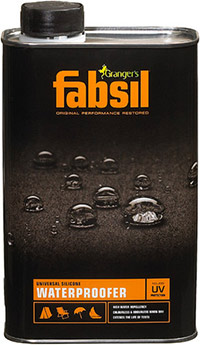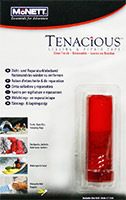How to Care for Your Tent

With the arrival of the summer months, many of us find ourselves pulling out our family tents from the back of the garage in anticipation of idyllic weekends away. But camping in the UK rarely means dry weather, and if your tent isn't in great condition or it hasn't been cared for properly, it can only mean waking up to damp inside. We thought we'd share some of our top tips for caring for your tent and simple fixes that might help if you're caught out.
![]()
Keep Your Tent Clean
British camping, especially at festival sites, usually means one thing; mud. But while many choose revel in it, your tent certainly won't!
Keeping your tent clean is quick, simple and is something you should try to get into your routine each time you go camping in the rain. A flysheet and inner tent free from dirt ensures any moisture can be wicked away and evaporated quickly, so no water sits in the material. These instructions apply to both synthetic and cotton canvas tents.
How to Clean Your Tent
- Choose a warm, dry day - the sooner after your most recent camping trip, the better
- Pitch your tent in your garden
- Make a solution of detergent-free soap such as Nikwax Tech Wash and luke-warm water
- Using a clean sponge, gently dab any dirt and grime from the flysheet and inner tent
- Allow to air-dry completely before storing away
![]()
Keeping Your Flysheet Waterproof

Most modern tent flysheets are made from Nylon or Polyester with a Polyurethane (PU) coating to make the fabric water repellent. Abrasion, exposure to UV, wind and rain will cause this coating to deteriorate eventually, and while the flysheet will still prevent water reaching the inner tent directly, it will begin to let water to soak into the fabric.
This can allow moisture to reach the inner tent if they come into contact with each other through a process called capillary action. It will also prevent condensation from leaving the inside of the tent - again causing it to collect and drip on the inner tent.
How to Re-Proof Your Tent
- Ensure your flysheet is clean
- Decant some Grangers Fabsil into a clean plastic container
- Using a paintbrush, apply the Fabsil to the fabric evenly
- Work methodically, painting each section of the tent at a time to ensure total coverage
- Wipe away any drips or pools of excess Fabsil with a clean cloth
- Allow to dry completely
- Pack away carefully
![]()
How to Repair Tears in Your Tent's Fabric

Packing and unpacking, pitching in the wind, people tripping over guy lines; the rigours of camping are tough on your flysheet and can lead to rips and tears in the fabric.
Duct Tape will usually provide a good short-term fix when applied to both sides of the fabric. For a more permanent solution, we recommend using McNett Tenacious Repair Tape, a clear tape that bonds to almost anything to form a near-invisible seal.
![]()
How to Store Your Tent
Even for keen campers, your tent will probably spend 90% of its life in storage. How you store your tent when its not in use will ultimately impact on its longevity and performance.
- Follow the steps above to ensure your flysheet is clean
- Avoid keeping your tent anywhere with extreme temperature changes such as your loft, or anywhere damp where mildew could form
- Keep out of direct sunlight
- Keep your flysheet and inner-tent loose out of their stuff sacks or consider an oversized mesh sack. This keeps the fabric ventilated, preventing any mould growth
- Lay poles flat to avoid wear to the ends
![]()
About the Author:Mike Humphreys - Online ContentMike is a keen cyclist, snowboarder, hill walker and Land Rover tinkerer. He has travelled extensively, spending a year living out of a van in New Zealand before joining Ellis Brigham four years ago. Can usually be found walking his dogs or tortoises. |






